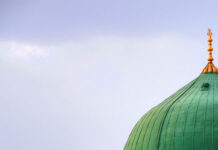The diverse terrain of Mongolia has wrought a unique culture born of the steppe, desert and city— we delve into some practices that have been given UNESCO Intangible Cultural Heritage status.
Text by Lim Jun Xi
Howling winds constantly tear across the Gobi. Its winters are among Earth’s coldest, and the massive summer dust storms offer scant respite. Nothing much grows on these barren plains – but, like other desert communities, the nomads that regularly migrate through this area and across the steppe of the north have discovered the best way to cope with the lack of food and constantly shifting sands: the two-humped Bactrian camel, a hallmark of Mongolian life.
With their naturally wide soles and legendary endurance for low water, food and temperature levels, every camel is as precious as family to nomads. Apart from transport, they provide milk rich in protein and calcium, which features in steaming cups of suutei tsai, a salty local milk tea. Milk can also be made into butter and cheese – whose long shelf life is invaluable on arduous migrations far from towns and cities. In fact, Mongols need their camels so much they rarely slaughter them, preferring to dine on the meat of goats, sheep, and horses. And to add to their list of charming qualities, the fluffy ungulates are also said by herders to have the softest hearts.

But camels aren’t completely desert-proof, and females only give birth to one calf every second year (after a 13-month pregnancy) to cope with the harsh conditions. This severely limits their numbers. There is the additional risk of losing mother or baby during labour; even if both survive, the exhausted female might reject her calf, and it will die.
Related: Great Games of The Great Khan
To save as many mother–calf pairs as possible, the community engages in a curious, centuries-old ritual called camel coaxing, which begins at dusk or dawn. Hoping for a bereaved female to foster an orphan or reconcile a calf with its mother, everyone dresses up in traditional garb and sits in a circle around the pair. Once the sun touches the horizon, a musician strums a morin khuur, or horsehead fiddle, and the herders begin chanting a khöös song, containing petitions to the spirits of Nature. Camel milk may also be proffered to the gods.

Initially, the female camel can lash out at the calf violently, spitting and biting. Observing her behaviour, the herders then change the khöös tune, weaving in poetry and song, or mimicking the sound of camels running and calling. These incantations continue for up to 12 hours, by which time the camel pair, and watching audience, are weeping with emotion. Adult and calf are henceforth bonded. Herders say that this practice embodies the importance of patience in developing relationships.
Despite the tenderness of this ritual, Mongols were once feared for their savage temperament, with no better representative than the warlord Genghis Khan, who in 1206 brought the Eurasian continent to its knees and formed the largest contiguous empire in history. Marching to invasions far from home, Khan’s elite horseback archers found themselves bored at night, and began flicking pieces of horn at small sheep bones to maintain the dexterity of their bow fingers. The practice caught on in camp, and over time rules were laid out, creating one of the country’s best sources of entertainment: knucklebone shooting.

Today, players use a domino-like ivory tablet in a wooden bracket to knock down a stack of 30 animal knucklebones on a wooden platform five metres away. The fallen bones clatter down into a hole and are counted – the more bones, the better – while half the watching crowd roars in approval, and the other yells in disappointment.
Related: No Land for Nomads
Such a sight is common throughout Mongolia, and everyone from children to adults participates. Elderly players are allowed to shoot with a crossbow-like instrument, called a havchaakhai, to put them on an even footing with fitter competitors. Accompanying the game are the communal borjigon chants: Much like football cheers, the style and tone of these differ based on the outcome of the shot. But even the losers don’t take things too hard, since the game is less of a competition and more of an excuse for a rowdy gathering.

Despite the Mongols’ reputation as a warlike people – and their popular games being derived from precisely such pursuits – their sophisticated side shines through in Mongolian calligraphy, a handwriting technique that delineates the classical Mongolian script, Hudum Mongol Bichig, in vertical lines on paper made of mulberry bark. The characters are formed using a brush and consist of 90 letters connected vertically by continuous strokes to create words. This calligraphy often adorns stationery on special occasions, such as official invitations and love letters, as well as old Mongolian emblems, coins and stamps.

Created in the 7th century, Hudum Mongol Bichig is the world’s only vertical script written from left to right. Used widely until the forceful introduction of Cyrillic by the Soviet Union on Outer Mongolia, it is dying out today – and along with it the calligraphy with which it is inscribed. To save the art, three middle-aged scholars are voluntarily training young calligraphers, but mastery takes years of disciplined practice, a reality that tests the patience of youngsters.

Though the Gobi is harsh, progress is still harsher, and Mongolia is seeing many customs, like camel coaxing and calligraphy, enter UNESCO’s List of Intangible Cultural Heritage in Need of Urgent Safeguarding as they fade from use. But the nomadic lifestyle is finding ways to survive, and for now, those who come across a caravan of nomads in the desert can still expect to be offered a warm welcome, shelter in a yurt, and a cup of salty tea made with camel’s milk.
Related: The Mongolian Gold Wars
For more stories and photographs from this issue, see Asian Geographic Issue 130, 2018












Fermented camel milk is also part of their diet. An acquired taste according to many tourists.